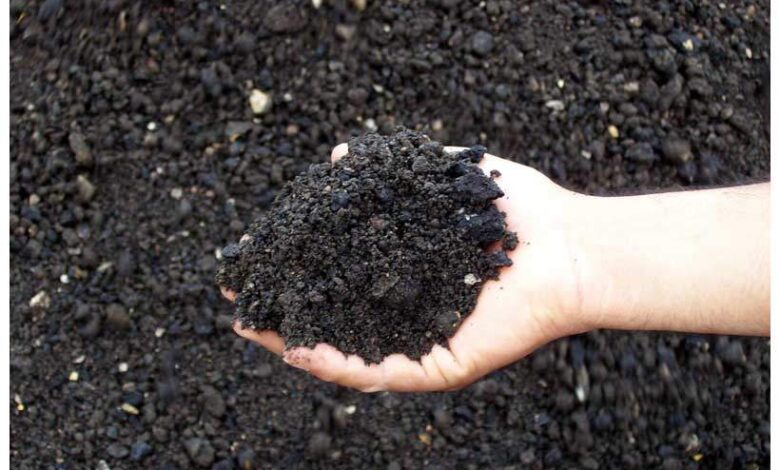Environmental Impact of Reusing Crushed Asphalt in Road Construction

Welcome to our most recent blog article, in which we explore the topic of road construction’s effects on the environment. Today, we’re going to look at a technology that could change the game: employing crushed asphalt again in road building. This creative solution has many advantages for the environment in addition to solving the issue of growing waste. So buckle up because we’re about to take you on an educational tour into the intriguing realm of sustainable infrastructure!
Introduction to the environmental impact of road construction
Road construction is a necessary aspect of building and maintaining transportation networks. However, it can also have significant environmental impacts that are often overlooked. The process of constructing roads involves the use of various materials, such as aggregates, asphalt, and concrete, which can have a negative impact on the environment if not properly managed.
Concern over how road development affects the environment has grown in recent years. Globally, there has been an increase in the size of road construction projects due to the need for new roadways to handle growing urbanization and population expansion. This has led to a number of adverse environmental repercussions, such as contamination of the air and water, destruction of wildlife habitats, and depletion of natural resources.
The use of conventional materials in road construction is one crucial element causing these effects. For example, because of its affordability and longevity, asphalt is one of the materials used in road paving the most frequently. On the other hand, producing it releases hazardous chemicals into the atmosphere and uses a lot of energy.
The extraction and processing of aggregates used in road construction also have adverse effects on the environment. These materials are typically sourced from quarries or gravel pits located near rivers or streams. The excavation process can result in erosion and sedimentation in nearby water bodies, affecting aquatic life and water quality.
In addition, conventional road development techniques entail burning or landfilling outdated pavement. This practice adds to air pollution and greenhouse gas emissions in addition to taking up valuable space.
What is crushed asphalt, and how is it used in road construction?
Crushed asphalt, also known as reclaimed asphalt pavement (RAP), is a cost-effective and environmentally friendly alternative to traditional paving materials. It is made from old asphalt that has been removed from roads, parking lots, or construction sites and then crushed into small pieces.
The use of recycled asphalt in road construction has gained popularity in recent years due to its numerous benefits. Not only does it save valuable natural resources, but it also reduces the amount of waste sent to landfills and decreases the need for new raw materials.
So, how exactly is crushed asphalt used in road construction? Let’s dive into the details.
1. Base Material: As a foundation material, crushed asphalt can be used to build new roadways or fix ones that already exist. To build a sturdy road base, the crushed particles are combined with other aggregates such as sand, gravel, and stone dust. This keeps cracks from forming and aids in water drainage, in addition to offering stability.
2. Surface Layer: Another everyday use of crushed asphalt is in the top surface layer of roads. In this application, it is mixed with bitumen (a sticky black substance) to create a durable surface that can withstand heavy traffic and harsh weather conditions. The texture of crushed asphalt also provides better skid resistance compared to traditional paving materials like concrete or gravel.
3. Asphalt Pavement Mixtures: Crushed asphalt can also be combined with fresh bitumen and aggregates to create new pavement mixtures.
Benefits of using recycled materials like crushed asphalt in road construction
Crushed asphalt is one of the many recyclable materials that can be used in road construction. By using these materials, we can improve road conditions, reduce waste, and conserve natural resources, which benefits our communities and the environment.
1. Reduces Waste in Landfills: One of the most significant benefits of using recycled materials like crushed asphalt is that it reduces the amount of waste being sent to landfills. One of the most widely utilized paving materials is asphalt, which frequently ends up in landfills after being removed from old roads. Reusing this material rather than throwing it away will help us cut down on the amount of area required for landfills and lessen the air pollution that comes from large trucks.
2. Conserve Natural Resources: Incorporating recycled materials into road construction also helps conserve natural resources. Using reclaimed asphalt requires less new asphalt to be produced, which means less crude oil needs to be extracted from the earth for manufacturing purposes. Additionally, mining for new aggregates (such as gravel and sand) can have harmful effects on ecosystems and local communities. By reusing existing materials like crushed asphalt, we can lessen our reliance on these finite resources.
3. Saves Energy: Producing new asphalt requires a considerable amount of energy compared to recycling existing materials like crushed asphalt. The process of extracting raw materials, transporting them to a plant for processing, and then transporting them again to a job site consumes a significant amount of fuel and releases harmful emissions into the atmosphere.
Environmental concerns with traditional road construction methods
Conventional techniques for building roads have long been linked to grave environmental consequences. Deforestation, soil erosion, and the depletion of non-renewable resources are consequences of the use of natural resources like gravel, sand, and stone aggregates for road construction. Furthermore, the conventional method of producing asphalt releases dangerous chemicals into the atmosphere and uses a lot of energy.
The extraction and use of virgin materials is one of the significant environmental issues associated with traditional road construction techniques. These materials are frequently taken from mines or quarries that are situated in natural environments, endangering species and upsetting the delicate balance of the ecosystem. Additionally, heavy machinery is used in the process, which pollutes the air and uses fossil fuels.
Another area for improvement with traditional road construction methods is the disposal of old asphalt pavement. When roads are resurfaced or reconstructed using new materials, the old asphalt is usually discarded in landfills or dumped in open areas. This not only takes up valuable space but can also leach harmful chemicals into the soil and water bodies.
In addition to these direct environmental impacts, traditional road construction methods also have indirect effects on ecosystems. The clearing of land for new roads can fragment habitat connectivity for wildlife species, disrupt migration patterns, and lead to loss of biodiversity.
Furthermore, traditional asphalt production releases volatile organic compounds (VOCs) into the atmosphere, which contribute to smog formation and respiratory health issues.
How using crushed asphalt can reduce carbon emissions and conserve natural resources.
With the increasing awareness of the detrimental effects of carbon emissions and the depletion of natural resources, there has been a growing focus on finding sustainable solutions in various industries. One such sector is the road-building business, which is well-known for producing large amounts of carbon emissions and using a lot of non-renewable resources. However, we can drastically cut carbon emissions and preserve natural resources by using crumbled asphalt in road construction projects.
What is Crushed Asphalt?
Crushed asphalt refers to recycled asphalt pavement (RAP) that has been crushed down to a smaller size. This material is created from old or damaged asphalt roads that are milled and crushed into gravel-like pieces. The resulting product can then be reused in new road construction projects as a substitute for traditional materials like gravel or new asphalt.
How Does it Reduce Carbon Emissions?
One of the main benefits of using crushed asphalt in road construction is its significant reduction in carbon emissions. It takes a considerable amount of energy and resources to produce new asphalt for road construction purposes. Aggregates are heated to extremely high temperatures during this process, which releases dangerous greenhouse gases into the atmosphere, such as CO2.
Using recycled broken asphalt, on the other hand, minimizes the amount of hazardous chemicals released into the environment by reducing the demand for new production and transportation methods. RAP integration also reduces the quantity of garbage dumped in landfills, which releases methane gas, another potent greenhouse gas that contributes to climate change.
Challenges and limitations of using crushed asphalt in road construction
Challenges and limitations of using crushed asphalt in road construction can vary depending on the specific location and project. While there are many benefits to using recycled asphalt, it is essential to carefully consider potential challenges before incorporating it into a road construction plan.
1. Quality control – One of the main challenges with using crushed asphalt is ensuring its quality. The quality of recycled asphalt can vary greatly depending on where it was sourced from and how it was processed. In order to ensure that the final product meets the required specifications for road construction, strict quality control measures must be implemented during the processing and testing stages.
2. Durability – The longevity of crushed asphalt in road-building projects may be impacted by its differing resilience from freshly mined materials. This is particularly true if a significant portion of the recycled material is made up of old pavement or other debris that could eventually erode its strength.
3. Weather conditions – The use of crushed asphalt in road construction can also be affected by weather conditions such as extreme temperature fluctuations or heavy rainfall. These factors may cause the material to expand or contract, leading to cracks and potholes in the road surface.
4. Limited availability – The fact that crushed asphalt is only sometimes readily available is another drawback to using it. Large-scale road construction projects may find it challenging or expensive to get enough material because recycling facilities might only be found in certain areas.



